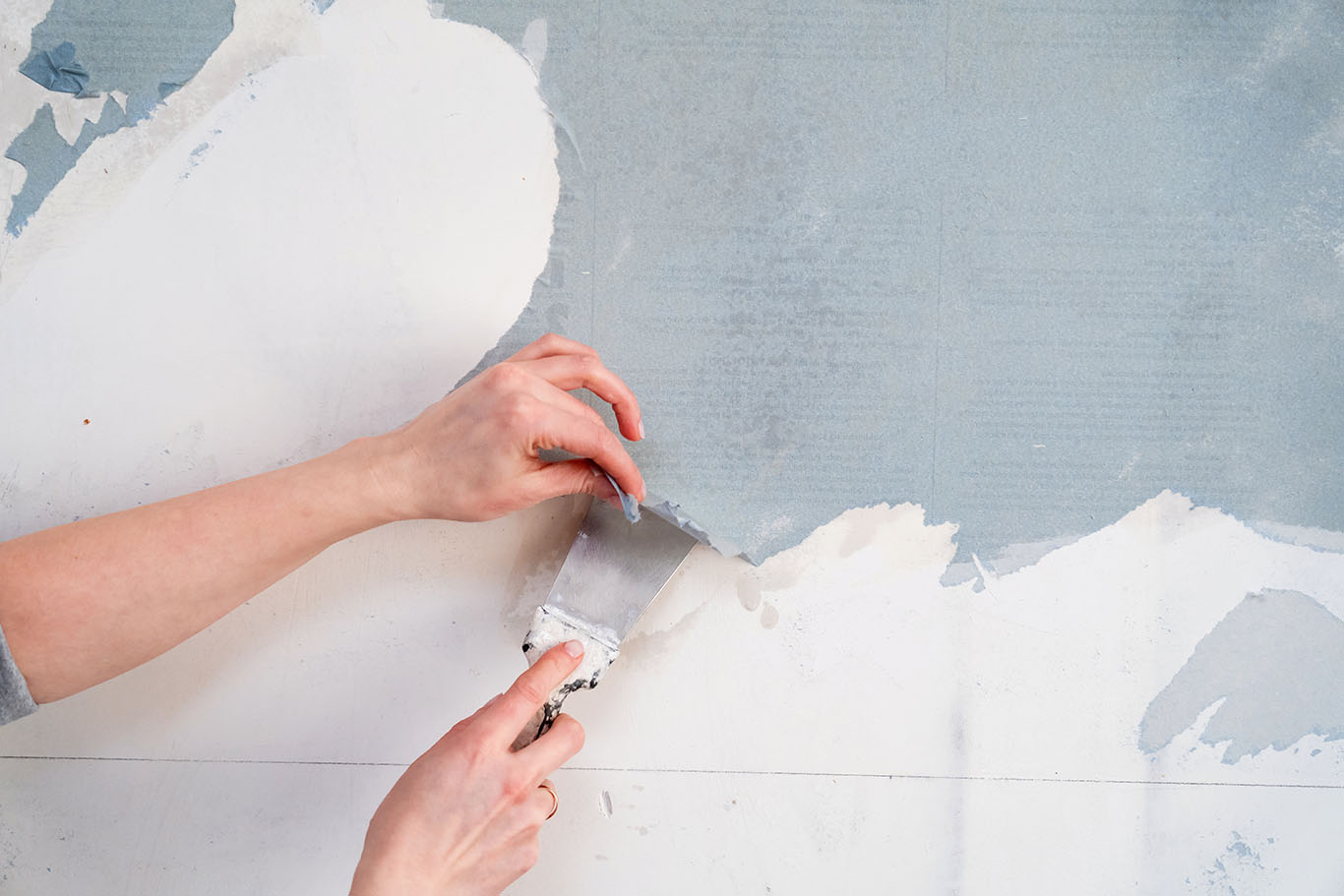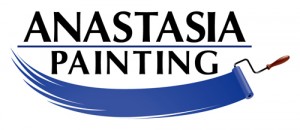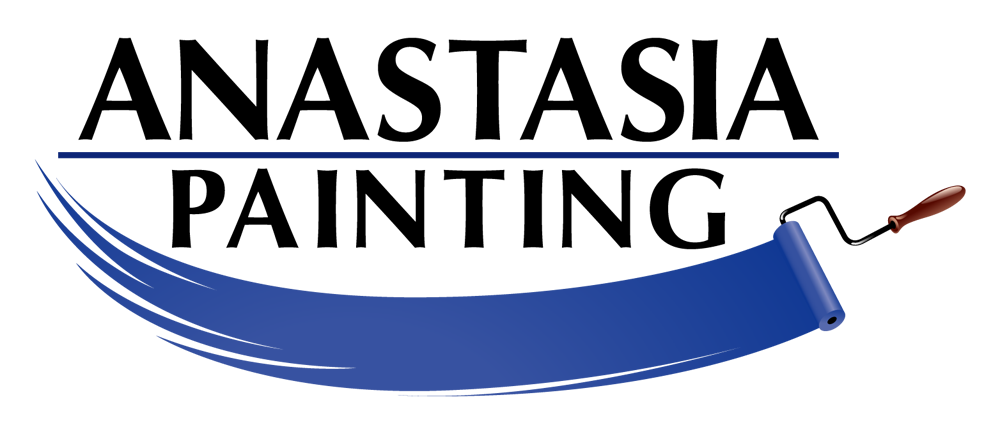St. Augustine's Clear Choice in Color!
Northeast Florida's Leading Residential Painting Contractor
904-540-5246

How do you remove wallpaper?
Wallpaper is the hottest new trend, but what happens when the fad is over? At Anastasia Painting, we are happy to help you restore your walls. There are multiple techniques for wallpaper removal depending upon the type of paper and adhesive used. Here are some great general tips to help get you out of a sticky situation.
Prep Your Space:
Inspiration and motivation have collided, and you are ready to begin your project! The very first step is to clean and clear the space. We recommend emptying the room, when possible. If you are unable to remove the furniture, push the furniture to the center. Using drop clothes cover the floors and furniture. Turn off the electricity to the room. Use painters’ tape to cover electric outlets and light switches.
Drywall or Plaster?
Before beginning work it is important to determine the wall type – is it drywall or plaster? Drywall can be sensitive to water damage. How do you determine if your walls are plaster or drywall? A simple pushpin test can answer that question. If the pin easily inserts into the wall with the push of your thumb, it is drywall. If it doesn’t, it’s plaster. You will need to be careful when using water to remove the paper. Oversaturating the wall will cause damage. The next step is to assess the type of wallpaper.
Know Your Type:
The three types of wallpaper: traditional, peelable, strippable. Carefully insert a putty knife under the corner of wallpaper.
If you are unable to slide the knife under the corner, it is traditional wallpaper. Known for its long-lasting nature, this paper is the trickiest of the three to remove and will require water plus a chemical stripping agent.
If the knife only lifts the top layer of paper, it is peelable wallpaper. Peelable paper is adhered with a minimum amount of adhesive, allowing for easier removal without causing wall damage.
If the paper removes easily, happy news you have strippable wallpaper! This ultra convenient paper is like a giant sticker and is designed for quick application and removal.
Removal Techniques based on Paper Type
How to Remove Traditional Paper:
Traditional paper requires more elbow grease, but with a little patience it is possible to remove.
Needed Materials:
• Wallpaper stripper
• Soap
• Water
• Spray Bottle
• Putty Knife/Scraper
• Scoring Tool
• Trash bags
• Ladder
• Rags
• Rubber Gloves
Follow the directions on the wallpaper stripper mixing with hot water. Add mixture to a large squirt bottle, consider using a large spray container from the lawn and garden section for this project. Starting from the bottom spray the wall in small sections, only spraying a few feet at a time. Do not oversaturate the wall, especially if it is drywall. Allow mixture to rest on the wall for several minutes. Using a wallpaper scraper or a putty knife carefully start scraping off the paper. Work slowly to prevent tearing the drywall. For paper that is extra difficult to remove, run a scoring tool in circles over the paper prior to soaking the wall. The scoring tool will cut small lines in the paper allowing the solution to further penetrate the paper without harming the wall. Once the paper in a section has been removed, move onto the next section repeating the process. After the paper has been removed it is important to clean the walls with warm soapy water to further remove any residue. Again, be cautious; do not saturate the wall.
For stubborn wallpaper adhesive mix liquid dish soap, with hot water, a large tablespoon of baking soda. Spray the wall, without oversaturating it, allow it to rest a few minutes, before scraping again. If unsuccessful, add 1 cup of vinegar to every gallon of mixture.
Repair any holes with spackle, taking care to sand until smooth once dry.
How to remove Peelable Wallpaper
Needed Materials:
• Soap
• Water
• Spray Bottle
• Putty Knife/Scraper
• Scoring Tool
• Trash bags
• Ladder
• Rags
• Rubber Gloves
Loosen the corner of the paper with a putty or scraping tool, slowing begin pulling the paper removing it in strips until only the protective layer is left behind. Mix Hot water and soap, adding mixture to a large squirt bottle, consider using a large spray container from the lawn and garden section for this project. Starting from the bottom spray the wall in small sections, only spraying a few feet at a time. Do not oversaturate the wall, especially if it is drywall. Allow mixture to rest on the wall for several minutes. Using a wallpaper scraper or a putty knife carefully start scraping off the paper. Work slowly to prevent tearing the drywall. For paper that is extra difficult to remove, run a scoring tool in circles over the paper prior to soaking the wall. The scoring tool will cut small lines in the paper allowing the solution to further penetrate the paper without harming the wall. Once the paper in a section has been removed move onto the next section repeating the process. After the paper has been removed it is important to clean the walls with warm soapy water to further remove any residue. Again, be cautious; do not saturate the wall.
For stubborn wallpaper adhesive mix liquid dish soap, with hot water, a large tablespoon of baking soda. Spray the wall, without oversaturating it, allow it to rest a few minutes, before scraping again. If unsuccessful, add 1 cup of vinegar to every gallon of mixture.
Repair any holes with spackle, taking care to sand until smooth once dry.
How to Remove Strippable Wallpaper
Needed Materials:
• Soap
• Water
• Spray Bottle
• Putty Knife/Scraper
• Scoring Tool
• Trash bags
• Ladder
• Rags
• Rubber Gloves
Using the putty knife or scraper gently lift the corner of wallpaper. Slowly, pull the paper off in strips. If the paper tears, simply go back and repeat the process at the tear until all the paper has been removed. Clean the wall of any additional film or residue with hot soapy water being careful not to saturate the wall.
How to remove stubborn wallpaper
We have all heard and may even have firsthand experience with wallpaper that seems impossible to remove. When in doubt steam it out! You can rent a wallpaper steamer from most hardware stores.
Needed Materials:
• Wallpaper Steamer
• Soap
• Water
• Spray Bottle
• Putty Knife/Scraper
• Scoring Tool
• Trash bags
• Ladder
• Rags
• Rubber Gloves
Following the directions on the steamer, allow the steamer to fully heat. Wear protective clothing and gloves to protect yourself from burns. Carefully apply steam to the paper, taking care not to over steam and damage the wall. Using a putty knife or scraper begin scraping and peeling the paper. If the steam still doesn’t seem to be working, use a scoring tool making large overlapping circles and try to steam again. It may be a slow process, but with patience it is possible to restore your wall to its pre-paper condition. After removing all the paper, clean the walls with warm soapy water to remove any remaining adhesive.
Remember the fresh vibes of clean walls, allow yourself to envision your home with a new perspective by removing old wallpaper. At Anastasia Painting we are always available to help you with your interior walls, simply call us today 904-540-5246.
Call Anastasia Painting today for an estimate on your next painting project at 904-540-5246.

